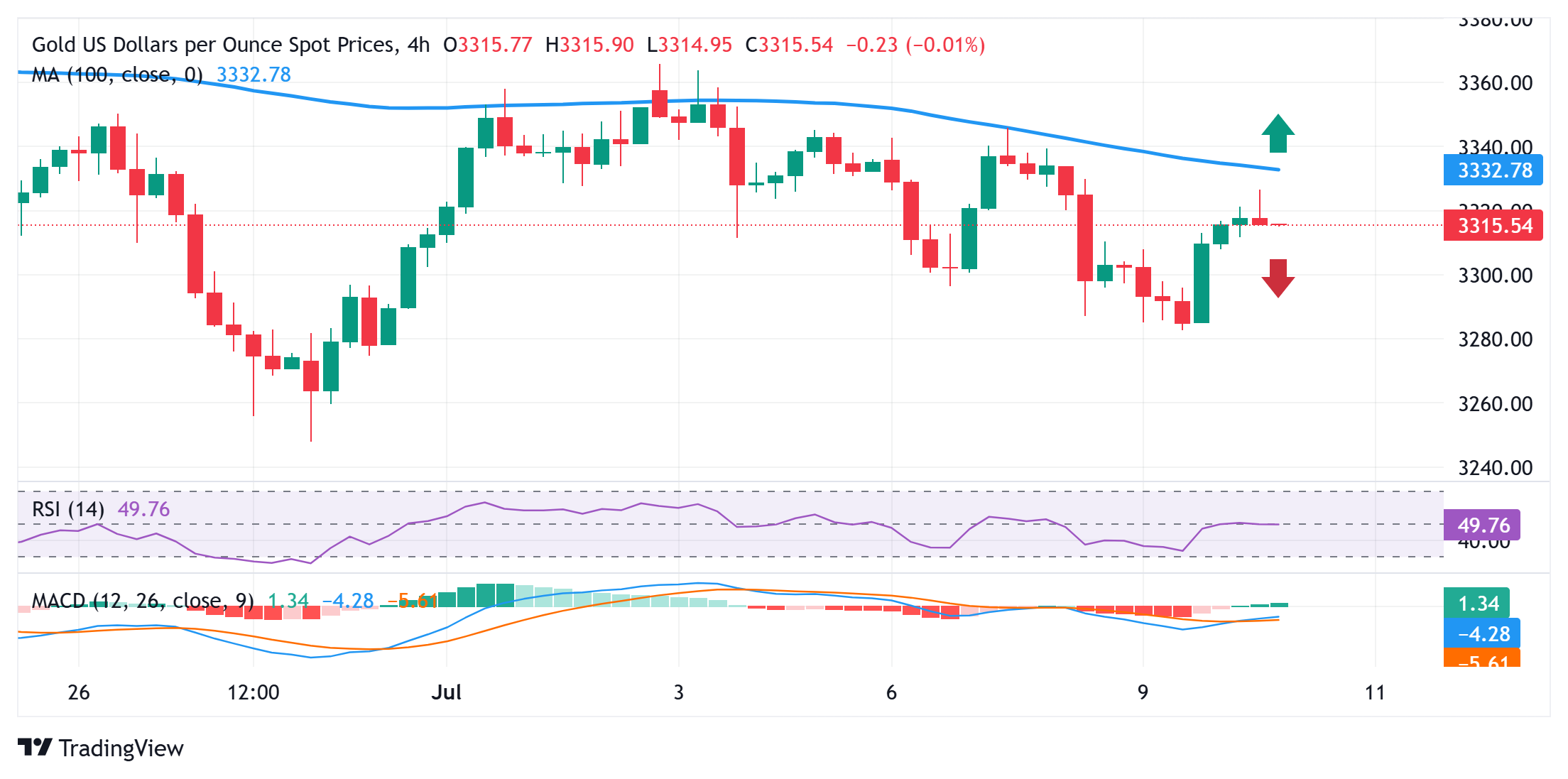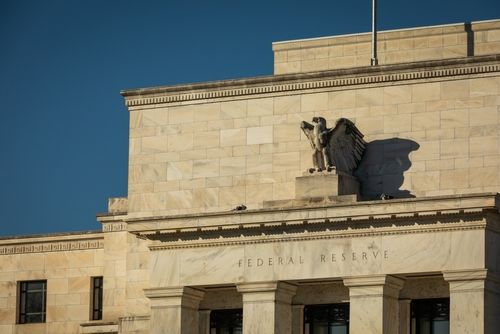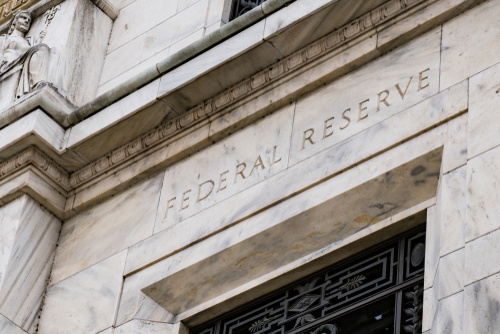Gold price trades with a positive bias above $3,300 but bullish conviction lacking

- Gold price ticks higher for the second straight day amid a combination of supporting factors.
- Trade jitters act as a tailwind for the safe-haven XAU/USD pair on the back of a softer USD.
- Declining US bond yields and Fed rate cut bets further benefit the non-yielding yellow metal.
Gold price (XAU/USD) attracts some follow-through buying for the second straight day on Thursday and recovers further from a one-and-a-half-week low, around the $3,283-3,282 region touched the previous day. Concerns about the potential economic fallout from US President Donald Trump's trade tariffs have helped revive demand for traditional safe-haven assets. Adding to this, a strong demand at the 10-year government debt auction on Wednesday and prospects for interest rate cuts by the Federal Reserve (Fed) this year lead to a further decline in the US Treasury bond yields. This, in turn, drags the US Dollar (USD) away from a two-week high touched on Tuesday and turns out to be a key factor underpinning the commodity.
Meanwhile, traders pared bets on the number of Fed rate cuts this year following the release of the upbeat US employment data last Thursday, which showed that the economy added more jobs than expected in June. Moreover, Minutes from the June FOMC meeting released on Wednesday revealed that only a couple of officials felt interest rates could fall as soon as this month amid worries about inflationary pressures from tariffs. This could act as a tailwind for the USD and hold back traders from placing aggressive bullish bets around the non-yielding Gold price. Hence, it will be prudent to wait for a subsequent strength beyond the $3,345-3,346 area, or the weekly high, before confirming a near-term bottom for the XAU/USD pair.
Daily Digest Market Movers: Gold price is underpinned by rising trade tensions, modest USD downtick
- US President Donald Trump issued tariff notices to eight minor trading partners on Wednesday and said that there will be no extensions for the countries that receive letters. Furthermore, Trump stressed that any retaliatory levies will be added to the existing US tariffs.
- Adding to this, Trump announced that the 50% tariff on copper imports will take effect on August 1. This adds a layer of uncertainty in the markets and turns out to be a key factor driving some follow-through safe-haven flows towards the Gold price on Thursday.
- Minutes from the Federal Reserve's June 17-18 policy meeting revealed that most policymakers remain worried about the risk of rising inflationary pressure on the back of Trump's aggressive trade policies. Moreover, some policymakers felt that no rate cut would be needed at all.
- However, most participants expected that rate cuts would be appropriate later this year and that any price shock from tariffs would be temporary or modest. This contributed to the fall in the US Treasury bond yields, triggered by a strong 10-year government debt auction.
- The US Dollar extends its retracement slide from a two-week high for the second straight day and turns out to be another factor that benefits the XAU/USD pair. Traders now look forward to the release of US Weekly Jobless Claims and speeches by Fed officials for a fresh impetus.
Gold price needs to surpass 100-SMA on 4-hour chart for bulls to seize near-term control

From a technical perspective, the 100-period Simple Moving Average (SMA) on the 4-hour chart, currently pegged near the $3,335 region, could cap any subsequent move up for the Gold price. This is followed by the $3,358-3,360 supply zone, which, if cleared, might trigger a short-covering move and allow the XAU/USD pair to reclaim the $3,400 round figure.
On the flip side, weakness below the $3,300 mark would expose the overnight swing low, around the $3,283-3,282 region. Some follow-through selling would make the Gold price vulnerable to accelerate the fall towards retesting the July monthly swing low, around the $3,248-3,247 region.
Tariffs FAQs
Tariffs are customs duties levied on certain merchandise imports or a category of products. Tariffs are designed to help local producers and manufacturers be more competitive in the market by providing a price advantage over similar goods that can be imported. Tariffs are widely used as tools of protectionism, along with trade barriers and import quotas.
Although tariffs and taxes both generate government revenue to fund public goods and services, they have several distinctions. Tariffs are prepaid at the port of entry, while taxes are paid at the time of purchase. Taxes are imposed on individual taxpayers and businesses, while tariffs are paid by importers.
There are two schools of thought among economists regarding the usage of tariffs. While some argue that tariffs are necessary to protect domestic industries and address trade imbalances, others see them as a harmful tool that could potentially drive prices higher over the long term and lead to a damaging trade war by encouraging tit-for-tat tariffs.
During the run-up to the presidential election in November 2024, Donald Trump made it clear that he intends to use tariffs to support the US economy and American producers. In 2024, Mexico, China and Canada accounted for 42% of total US imports. In this period, Mexico stood out as the top exporter with $466.6 billion, according to the US Census Bureau. Hence, Trump wants to focus on these three nations when imposing tariffs. He also plans to use the revenue generated through tariffs to lower personal income taxes.




-24998ce9215f4781a8d3878dba968c9e.jpg)



